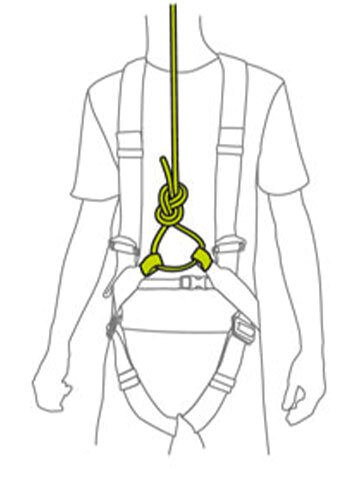Climbing harnesses
The harness is the central piece of equipment for recreational climbing. Whether on the rock or in the hall, only with the right climbing harness and integrated into a climbing rope, one can venture into the air with a clear conscience. The market today offers a variety of innovative climbing harnesses.
The standards that certify harnesses for any mountain activity are EN 12277 and UIAA 105. According to these standards harnesses are divided into 4 types:
- Type A – full body harnesses
- Type B – small body harnesses, for people under 40 kilos
- Type C – sit harnesses
- Type D – chest harnesses
You’ll find sit harnesses worn for practically every type of climbing – they are the real all-rounders. Whether for sport climbing, ice climbing, multi-pitch routes, mountaineering, ski-mountaineering or via ferratas. Sit harnesses allow good freedom of movement and a high degree of safety without weighing much. In addition, sit harnesses have plenty of room for adjustment and numerous gear loops for all your equipment. Sit harnesses allow you to sit comfortably in them when hanging. They also spread the load to the upper thighs in the event of a fall.
Limitations
So are they suitable for everyone then? Well, not quite. Smaller children and heavier climbers should additionally wear a chest harness or a full-body harness. In both cases, due to the anatomy of their hips, relatively high center of gravity and in certain cases reduced body tension, a sit harness alone would not be recommended.
Advantages
- Full freedom of movement
- Lots gear racking options
- Lightweight
- Small pack size
Disadvantages
- Possibly dangerous in the event of an upside-down fall – can slip if hip anatomy not appropriate
- Requires a certain amount of body tension
- Not ideal for hanging in while carrying with a backpack
Chest harnesses are designed to be used in conjunction with a sit harness. Climbers with very skinny hips (especially kids) and very heavy adults should wear one. In the worst-case scenario, in the event of an upside down fall, a sit harness worn without a chest harness could potentially slip off the wearer. Sit harnesses do not provide adequate protection for climbers with insufficient body tension. It’s important though that a chest harness is always used together with a sit harness. Why is this? Hanging in just a chest harness, even if only for a short while, can be extremely dangerous and lead to Suspension Trauma. This is when the webbing at the armpits restricts important blood vessels.
Climbing photographers and alpinists who spend long periods hanging on a rope while carrying a backpack and heavy gear often chose to wear a chest harness with a sit harness. Better load distribution and the upright position require less body tension and decreases the strain on the core muscles (so that the torso muscles get tired less quickly).
The chest harness is generally attached to the sit harness using a sling. Alternatively, you can run the rope directly through the chest harness as illustrated.
Advantages
- Comfortable to hang in when used in combination with a sit harness
- Holds climber in an upright position
- No danger in the event of an upside
- Provides support and relieves strain when hanging with a backpack
Disadvantages
- Additional sit harness needed
- Slightly restricts freedom of movement
Full-body harnesses work in the same way as a sit harness and chest harness combination. In addition, these one-piece harnesses have advantages when it comes to handling and offer a wide range of adjustment. Unlike the sit harness / chest harness combination, the full-body harness requires no sling to connect the chest harness to the harness. Full-body harnesses are easy to adjust and cater for people of all shapes and sizes. This makes them particularly popular in the rental sector and high ropes courses or adventure parks. Full-body harnesses also provide a higher attachment point, which reduces the chance of the climber turning upside-down in a fall. This is particularly useful if the user is climbing with a pack when the center of gravity will be higher. However, full-body harnesses do weigh more than normal harnesses and take up a fair amount of space in your backpack. They also offer less freedom of movement.
Advantages
- Holds climber in an upright position
- Relatively easy to use
- No danger in the event of an upside-down fall
- Provides support and relives strain when hanging with a backpack
Disadvantages
- Bigger pack size
- Relatively heavy
- Slightly restricts freedom of movement




